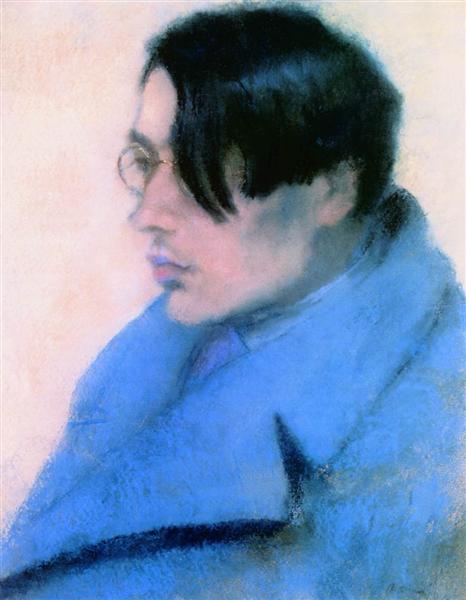Description
In the vast and multifaceted spectrum of European art of the early twentieth century, the figure of József Rippl-Rónai stands out for its wise convergence of tradition and modernity. His work "Portrait of Lorinc Szabo" of 1923 is a sublime manifestation of his distinctive style, a fusion of the influence of post -impressionism and an intricate sensitivity towards the psychology of the portrayed.
When observing the work, the mastery of Rippl-Rónai becomes evident in the artistic composition. The figure of Lorinc Szabo is central and dominates the scene, immediately capturing the observer's attention. Szabo, a famous Hungarian poet, is represented with an air of solemnity and contemplative depth that invites an internal reflection. Its relaxed posture and facial expression seem harmlessly distant, accentuating a feeling of introspection and poetic melancholy that is almost palpable.
The use of color is masterful. Rippl-Rónai uses an elementary but evocative palette, where earthly tones predominate, mixed with subtle nuances of gray-green that enrich the texture of the skin and Szabo's clothes. Chromatic schematization creates a visual harmony that frames the character without distracting the attention of his imposing presence. The choice of colors reflects a quiet and slightly twilight atmosphere, which could be interpreted as a metaphor of the poet's own creative process.
The background of the paint is an almost abstract space, barely outlined with some long strokes that suggest an indefinite interior. This technique not only places greater emphasis on the central figure, but also adds a dreamlike dimension to the portrait. The absence of decorative elements in the environment allows the viewer to focus exclusively on the relationship between the character and his own internal world, a characteristic that is fundamental in the work of Rippl-Rónai.
In terms of technique, Rippl-Rónai demonstrates a consummate ability in the management of the brush and the distribution of color on the canvas. The brushstrokes are precise but full of vivacity, providing a fine texture to the painted surfaces. This particular style has been a constant in the artist's career, who always sought to capture not only the appearance, but also the essence of his subjects.
A contextual reference is relevant when discussing this specific work. József Rippl-Rónai was one of the main exponents of the "Nagybánya" movement, which was a group of Hungarian artists who tried to renew Hungarian art through the adoption of the innovations of impressionism and post-impressionism. In this context, "portrait of Lorinc Szabo" can be seen as an intersection where modernity and Hungarian tradition are found in an artistic symbiosis.
Finally, it is important to consider the relationship between the artist and the portrayed. Lorinc Szabo was a significant cultural figure in Hungary, and his collaboration with Rippl-Rónai can be interpreted as an encounter between two creative minds that, through different means, contributed greatly to the cultural landscape of their country. This painting is not only a portrait, but a silent dialogue between poetry and painting, a testimony of a golden era of Hungarian creativity.
In summary, "Portrait of Lorinc Szabo" by József Rippl-Rónai is a work that encapsulates psychological depth, technical precision and the rich cultural tradition of Hungarian art of the early twentieth century. Each line and each colored nuance are witnesses of the expertise of a master which managed to transcend the borders of time to offer a visual narrative of incalculable value.
KUADROS ©, a famous paint on your wall.
Hand-made oil painting reproductions, with the quality of professional artists and the distinctive seal of KUADROS ©.
Art reproduction service with satisfaction guarantee. If you are not completely satisfied with the replica of your painting, we refund your money 100%.

